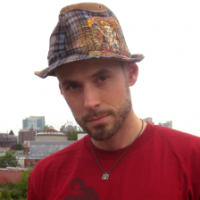When I first heard the mythology, I was intrigued: workshops with the first non-Indian to study with (and subsequently spread) the yoga of Pattabhi Jois. Jois, who died in May 2009, has achieved godly status among American yogis, most particularly those who study his Ashtanga sequences. When contemplating on whether or not to take David Williams’ workshops at Pure Yoga, all signs pointed to go, though not without a sliver of trepidation. I’ve long cultivated a fond respect for Ashtanga, but have been turned off by the discipline’s lesser examples: a competitive drive and the insistent focus on which series you’ve ‘gotten to.’
I’m not adverse to a healthy dose of competition. Since I started swinging at tee-balls when I was just old enough to wield a bat, some sport or other has occupied my life. The competitive spirit grows you, helps you achieve levels that were once distant possibilities. You can’t replace the rush of a full-court breakaway, not least because you want the other side to suffer for lackadaisical passing.
When I leave the basketball court, it really isn’t about winning, however. What I crave is that both sides offer their full effort. I’ve been prouder to lose certain games than win giveaways. Competition in yoga is a whole other dimension, though. When I’m attempting a challenging arm balance, I may be competing somewhat with myself, but I certainly have no clue (or care) whether the person next to me is rocking it easily or staring around the room in horror. And I definitely don’t want to hear about how third sequence is no longer a challenge.
Hence, my slight distress when entering Pure. I don’t regularly practice Ashtanga at the studio¾it’s an early morning class, when I’m teaching elsewhere around Manhattan. My apprehensions arose from the Ashtanga I’ve taken around New York City and in Miami, in which I was wrapped and warped into arm binds and leg crossings that my knees and right shoulder have no place going. Yes, I did get into them, but I’m also a teacher and have a pretty good awareness of just how far I can take it (and have left with a sore lower back, aching knee and overstretched foot). I especially fear for the new student who has to face certain barking Bikram instructors (to pull from another style) that yell at students to lock joints they didn’t know they had, or Asthanga teachers who push nose to knees with no grace or subtlety.
Asanas are about sustainability; tearing hamstrings and inflaming rotator cuffs do not promote this. When Williams announced he’d actually changed certain aspects in the primary sequence, which is sacrilegious to some devotees, I exhaled and smiled. I figured if anyone was allowed to do such a thing, it’s probably the man who introduced Ashtanga to Americans.
Despite any concern I had entering the studio, the man is one of the most gentle and generous instructors I’ve studied with. There was a respect for everybody’s individual issues, which for me amounts to meniscus damage and a torn labrum in my right hip. The reason I stopped practicing Ashtanga was because lotuses are impossible for my knees and hip to handle. When enough instructors bend you like it’s an essential component, you either stay and suffer, or leave. And to my knowledge, yoga was about alleviating suffering, not creating more.
Not that every Ashtanga yogi is only concerned with rocking the most picturesque asana. I’m sure the percentage favors those there to breath, stretch, and meditate, unconcerned with how they’d look on a magazine cover. Unfortunately I’ve crossed paths with just enough people who do care about the latter. Bikram can keep demanding an Olympic bid for yoga all he wants. Just because asana competitions have been popular in India for decades does not mean the rest of the world needs them.
The lesson I’ve taken from the two workshops with David Williams: breath before posture. Always. Honoring your capabilities and committing yourself fully to them is going to make strong yogis of us all. If there need be a sense of competition, let it be with how well you’ve breathed yourself. Anything else, to paraphrase Hillel the Elder when contemplating the Torah, is commentary.











Read 1 comment and reply